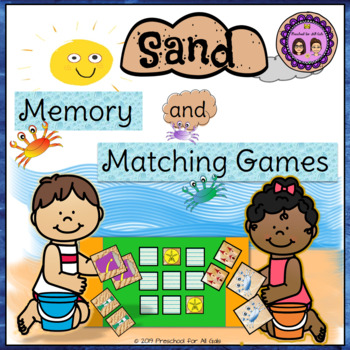Sand Memory and Matching Games
- PDF
Description
These SAND themed games introduce and reinforce memory and matching skills, color recognition, labeling, counting, quantity, and patterning concepts. These games are a FUN and MEMORABLE way to develop vocabulary and understanding of object function, and to promote language skills as students discuss their experiences with sand and related actions and items. These memory and matching cards are a great activity for guided literacy and math centers, small student led groups, and independent practice. Children will develop SOCIAL and LANGUAGE skills as they work together.
This pdf file includes:
- 21 product pages – 10 pages with colored backgrounds and 10 pages with no background, 1 page with colored squares for the back of the game cards. There are 6 game cards to a page, 12 game cards to a set.
- 5 sets of game cards include: sandcastles, sand crabs, sand timers (hourglass), sand buckets, and sand dollars. Each set has 12 different pictures.
- Each set comes with and without backgrounds on each card.
Plus... we've included directions for preparation and ideas for play.
This product is for personal classroom use only. This product is not for commercial use and may not be distributed, transferred, or shared in any form.





